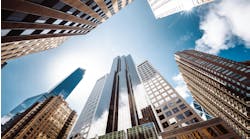According to a recent report from the American Council for an Energy Efficient Economy, the U.S. is not #1 in energy efficiency.
This might not be a surprise to you, but the U.S. ranked 9th overall of 12 major countries in the comparison of four sub-categories. Individual rankings are listed in the following categories: Transportation (12th), Buildings (4th), Industry (6th) and Energy Policy (9th). You can download the full report on the ACEEE website, included here for convenience:
http://profitablegreensolutions.com/?q=resources/aceee-report-national-energy-efficiency-2012
So what does it take to be #1? In an effort to list some “good ideas”, this article lists my observations from several different countries and clients that I have visited during the past three years. Hopefully, some of these anecdotes will allow you to implement energy savings in your facilities.
Tonight I write from one of the most densely populated areas in the world: Kowloon, Hong Kong. Despite Hong Kong’s hot and humid weather, the city is very energy efficient. Each person’s carbon footprint is only 28% of the average person living in the US. Every time I visit HK, I am amazed at the efficiency of the transportation systems. In Hong Kong and many other areas of the world, the rail system is incredible. It is cheaper, faster, and much less hassle than a car.
How does this apply to your building? Well, it’s not just about the subway, part of their success relates to their systems. The rail system must move millions of people every day through the stations, which also have many shops and retail outlets. There would be terrible congestion and wasted resources if they didn’t have this special tool: The “Octopus”.
An Octopus, which is a pre-paid proximity badge that gets you in and out of the subway without stopping because sensors automatically deduct your distance-based fare as you leave the station. But the Octopus does much more than paying for buses, taxis and other mobile transportation. You can also use it to purchase food and drinks from the city’s vending machines or convenience stores. It’s a very quick process. After you pick out what you want to buy, it takes the cashier two seconds to scan your item and then you hold your Octopus, which can be inside your wallet or purse, near the sensor and “beep” - your Octopus card is deducted.
As HK’s daily success depends on the speed of the transportation system and all of these systems to save minutes, which really add up. Also, think of all the time not handling loose change, counting coins, etc. Even the escalators run at different speeds to accommodate the rush hour flows of people. Another design element that was noticeable is that when you switch trains, they actually have it coordinated so that you can get off one train, cross the platform and be onto the next within one minute.
These systems set the “norm” for people and inspire the next generation of thinking. This thinking carries over to how buildings are designed and operated, and a culture of efficiency is born. This culture permeates the daily activities and has positive ancillary effects that promote a daily focus of eliminating wasted time and resources within any process.
As I have found in a few advanced manufacturing plants (Toyota comes to mind), there are systems of elegant design, which have been thought through very well to the extent that there were no steam leaks in the boiler room - the floor was dry. I have been to several “no landfill” automobile manufacturing plants and the thinking that goes into that process really yields some resource savings via optimization.
Japan, Australia, Africa, the United Kingdom and many others also utilize smart systems to conserve resources. In many hotel rooms around the world, guests use a room access control system such that when you are not in the room, the energy using devices in the room shut off, or at least are set back considerably. Everything from the air conditioner, TV and all lights will automatically turn off when you leave the room.
It’s a little strange at first, but once you get used to it, you will find that it is actually quite convenient as you don’t have to turn off individual lights, you just leave the room and everything shuts down. These systems would save many buildings over 20% by avoiding waste. I have heard presentations that such systems would require US hotels to renovate, but if they implement such systems, the paybacks would be between 1-3 years.
There are other less technology-oriented solutions, which can also be highly effective. Oklahoma State University has implemented a behavior change program that includes a disciplined approach to scheduling. Basically, after getting the University President committed to the policy, facility managers turn off the HVAC and lighting when classes aren’t scheduled.
This sounds simple, but implementing it and maintaining the savings requires discipline, such as when granting rare exceptions to the policy. They have removed the “luxury of HVAC” when buildings are lightly occupied and they have saved over $19 million dollars in 5 years. You can read their very successful policy by visiting this website: http://www.okstate.edu/energy/osu-energy-guidelines
Ultimately, energy use is a real cost (as well as societal pollution cost) that reduces the U.S.’s ability to turn a profit, so it does matter to our economy. Unfortunately, the ACEEE report shows that the US’s progress to reduce energy intensity (energy/person or energy/GDP) is among the lowest in the study. In a non-partisan statement; I don’t think we can rely on government to agree and implement the energy policy, so the innovation must come from ourselves. Remember as Winston Churchill said, “We Shape our Buildings, and our Buildings Shape Us”.


